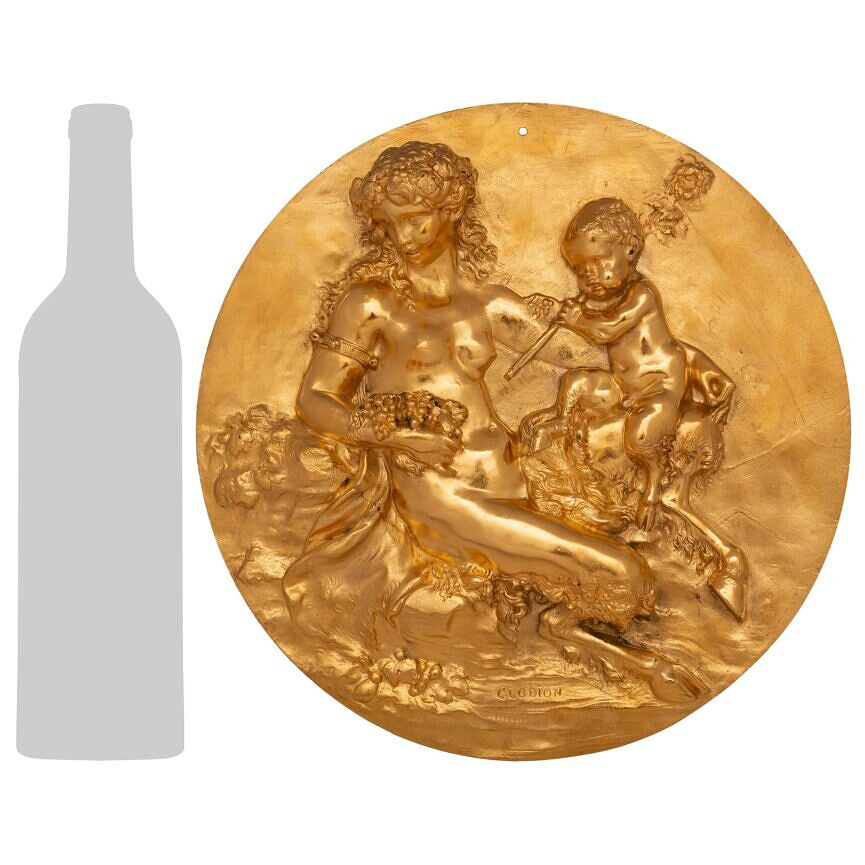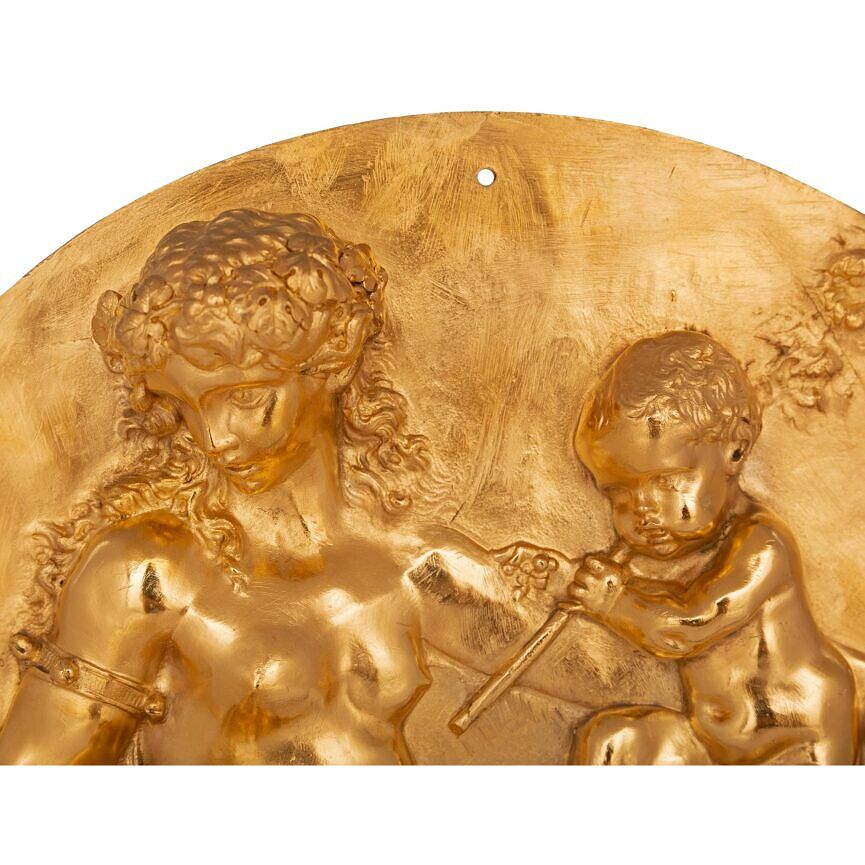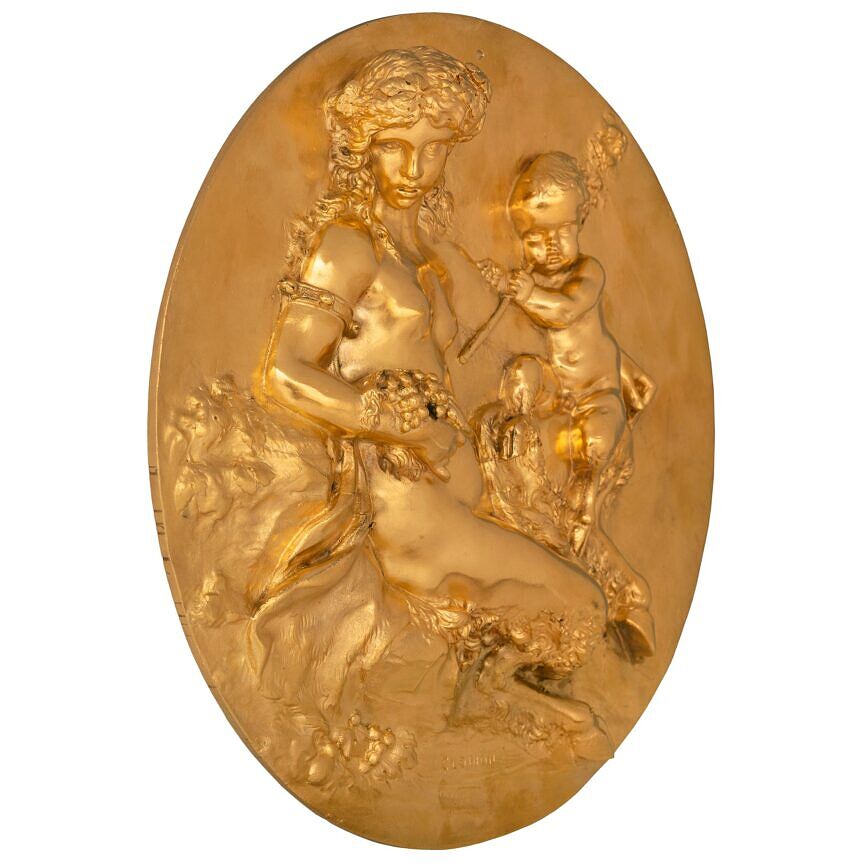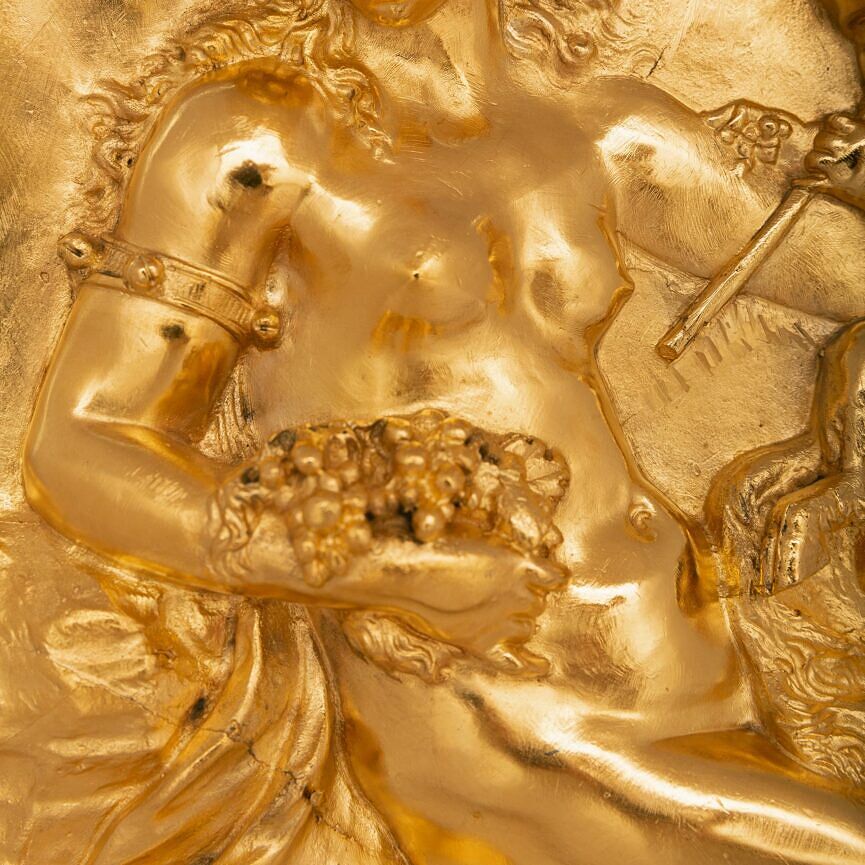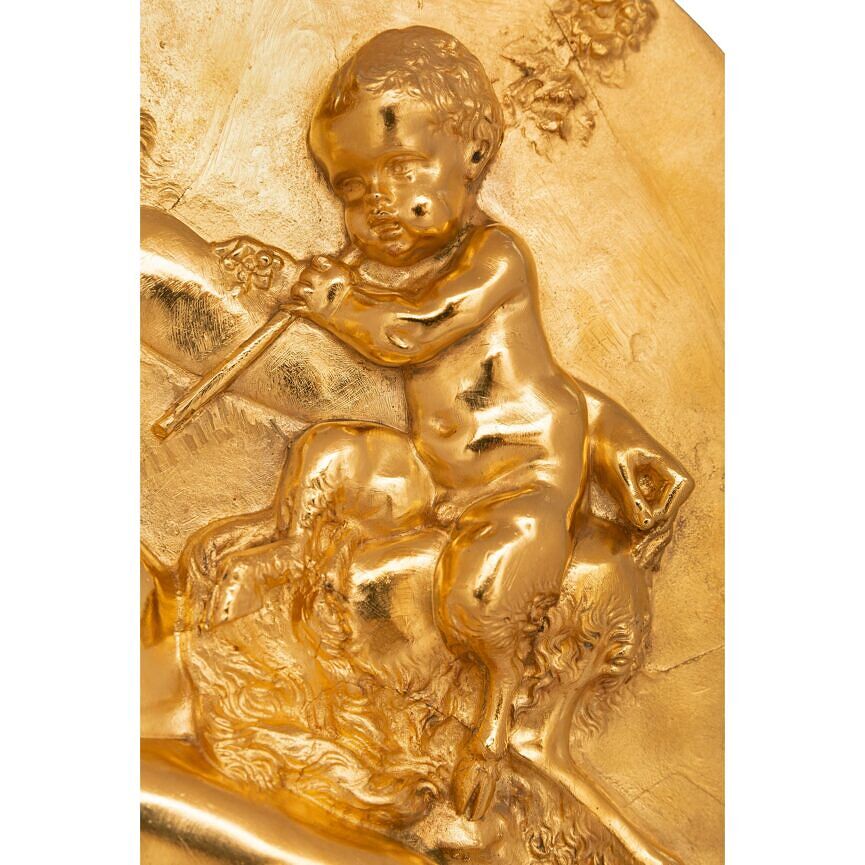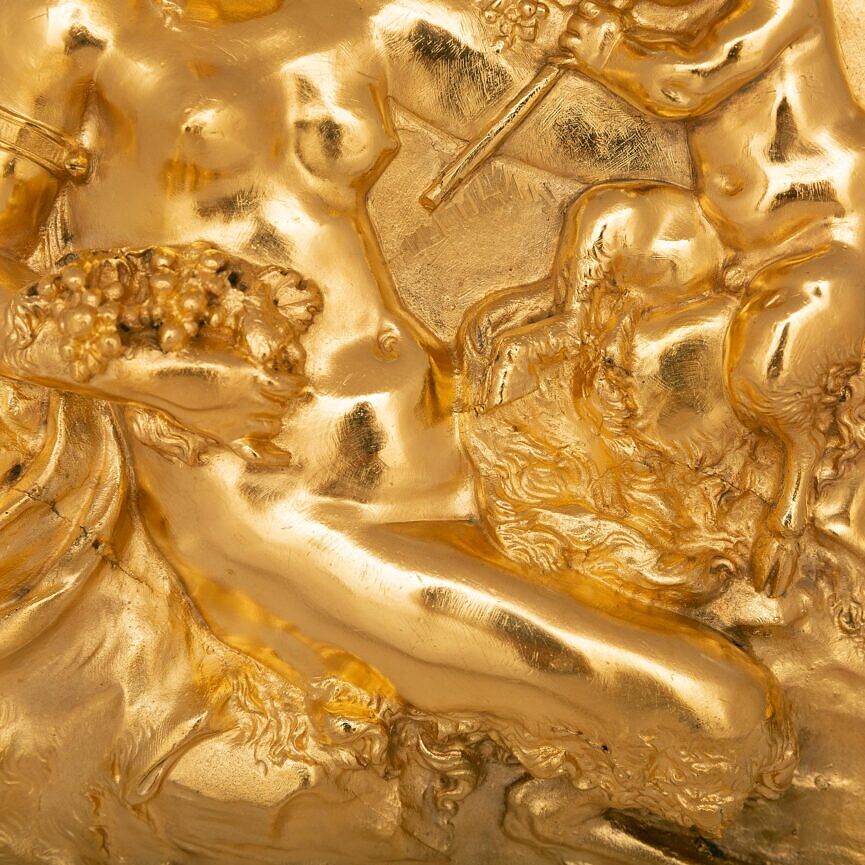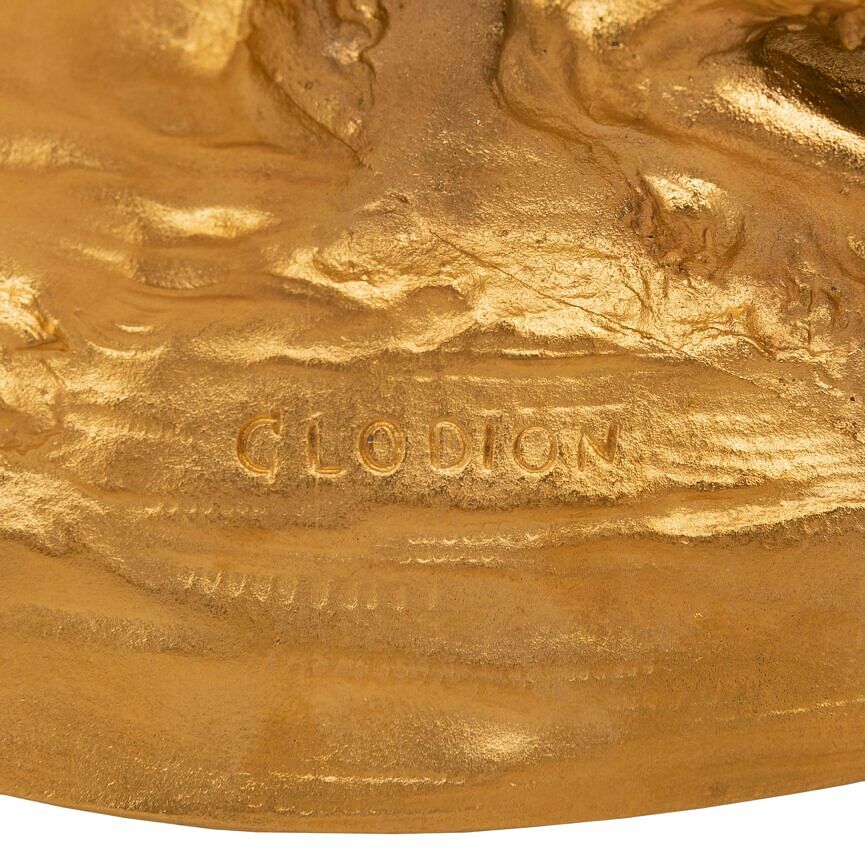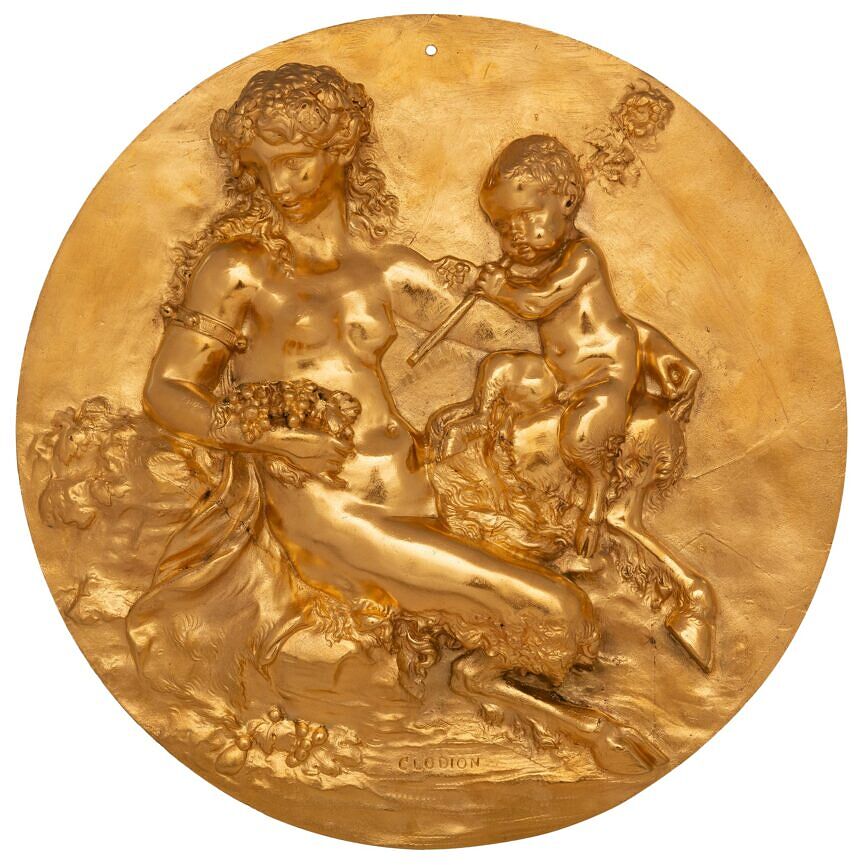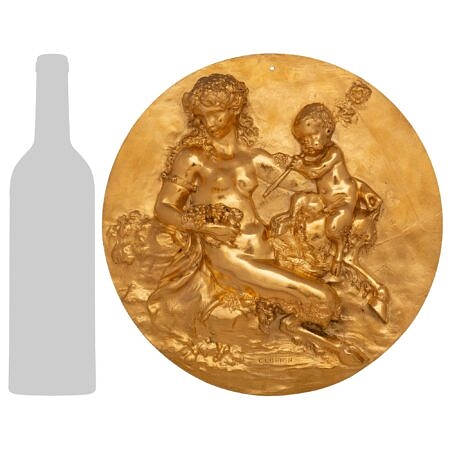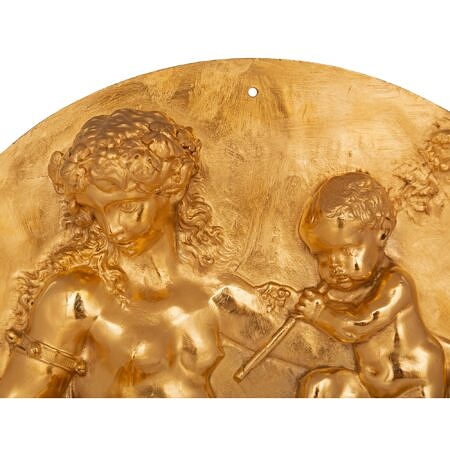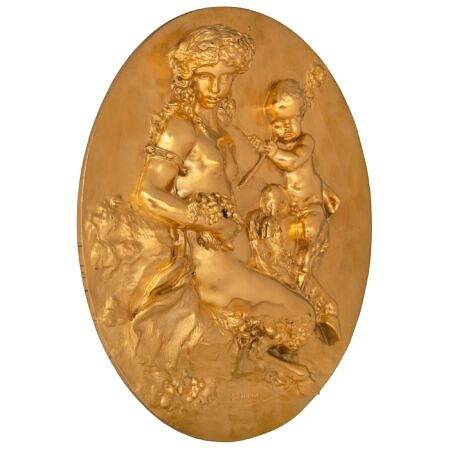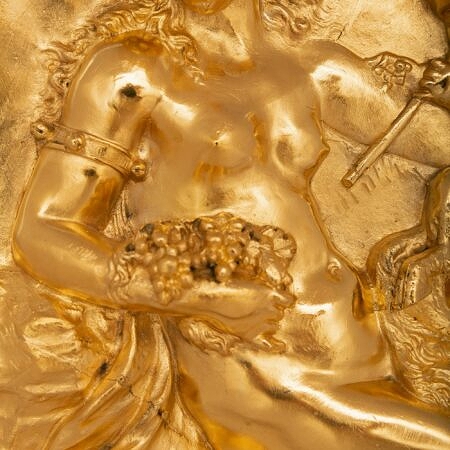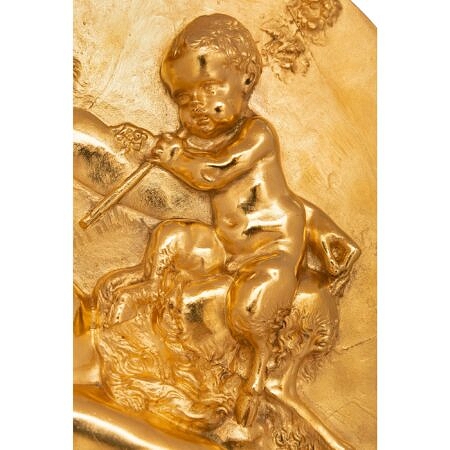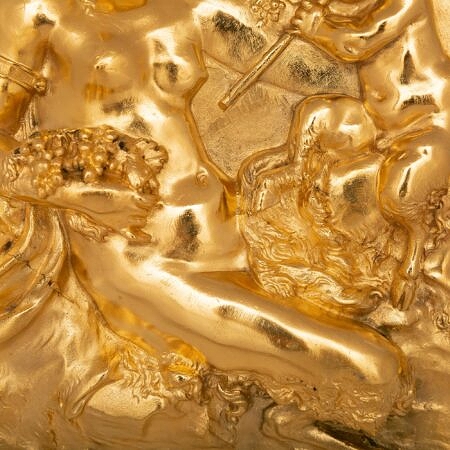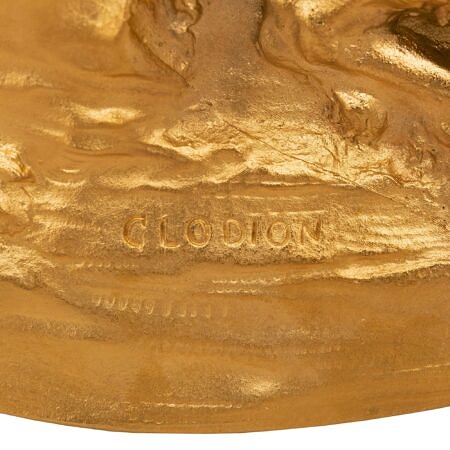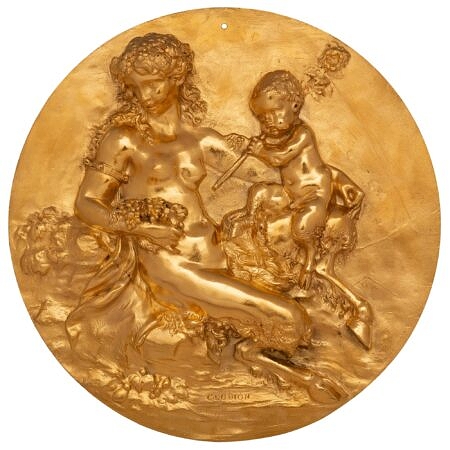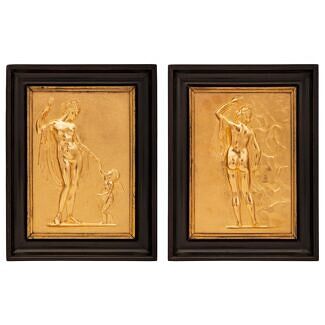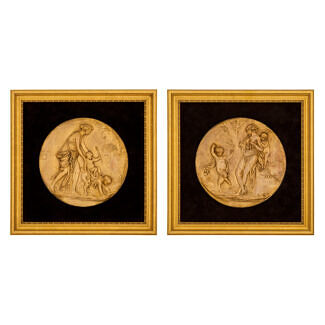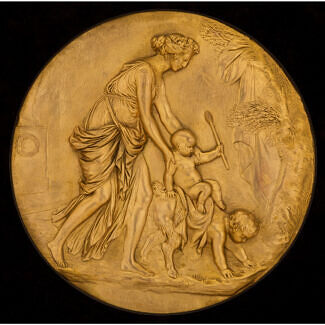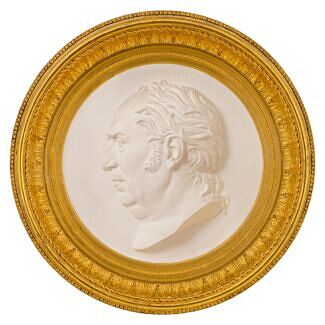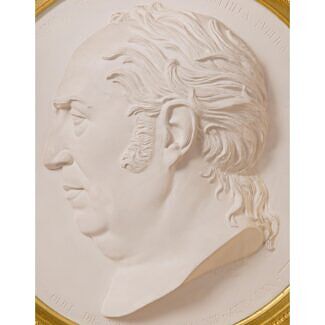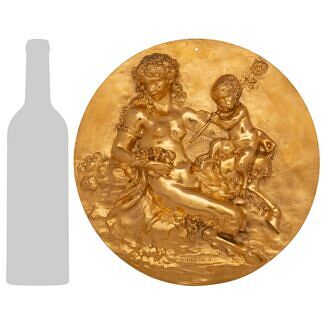A superb and very high quality French 19th century Louis XVI st. Belle Époque period ormolu plaque signed by Clodion. The circular relief depicts a beautiful female faun sitting with a young faun on her knee. The young faun holds... — Read More
A superb and very high quality French 19th century Louis XVI st. Belle Époque period ormolu plaque signed by Clodion. The circular relief depicts a beautiful female faun sitting with a young faun on her knee. The young faun holds a staff over his shoulder while she holds grape clusters in her hand with a band around her arm and grape leaves in her wonderfully executed flowing hair.
Claude Michel, aka Clodion (1738 – 1814) A renowned French Master sculptor born in Nancy, France. In 1755, Clodion went to Paris and was a pupil of J. B. Pigalle. In 1759 he obtained the grand prize for sculpture at the Académie Royale and in 1762 he went to Rome. His works were frequently exhibited at the Salon. Clodion's renowned works are displayed all over the world. — Read Less
- Item # 12499
-
H: 11.25 in L: 11.25 in D: 1.5 in
H: 29 cm L: 29 cm D: 4 cm
- France
- 19th Century
- Ormolu
-
Belle Époque Read More,
Louis XVI st. Read More
(Belle Époque) -
Gaining its name from the optimistic and peaceful period of time between 1871 and World War I, Belle Epoque means “beautiful period”, and occurred during the era of the Third French Republic. This period of economic, colonial, and scientific prosperity brought with it a flourishing artistic climate with numerous literal, musical, theatrical, and visual masterpieces being created.
The Eiffel Tower, which was constructed between 1887 and 1889, served as the entrance to the World’s Fair held in Paris. That same year, the Moulin Rouge cabaret in Paris was founded and showcased the now more mainstream styles of performance including can-can dancing. Belle Epoque dancers and singers were Paris celebrities and became immortalized by the poster arts of Toulouse-Lautrec.
Leading up to this period in 1865, the American Civil War was coming to a close, with France proposing to construct the Statue of Liberty as a joint effort with the United States. France would be responsible for the statue, with America constructing the pedestal. Created to celebrate the nation’s success in building a viable democracy, the statue would stand as a symbol of friendship between the French and American people.
(Louis XVI st.) -
Also known as Louis Seize, Louis XVI's style is a style of architecture, furniture, decoration, and art created during Louis XVI’s 19-year reign in France, just before the French Revolution.
Thought to be a reaction and juxtaposition to the prior more elaborate styles, Louis XVI style developed at the end of the Baroque Period and continued until the birth of French Neoclassicism.
King Louis XVI showed little enthusiasm for the old world styles of the Baroque Period and he sought out a create a new “beau ideal” that focused on the purity and grandeur of Ancient Romans and Greeks.
Inspired by Ancient Roman architecture and art, distinct features of the Louis XVI style are linear lines, small repeated motifs, floral medallions hanging from ribbons, acanthus leaves, urns, dolphins, ram, and lion heads, and griffins.
Greco-Roman elements, often used in earlier and later French styles, were also quick common and included fluted and twisted columns, Caryathids, and corbels.
- Claude Michel Read More
Claude Michel, aka Clodion (1738 – 1814) Was a renowned French Master sculptor Born in Nancy, France. In 1755, Clodion went to Paris and was a pupil of J. B. Pigalle. In 1759 he obtained the grand prize for sculpture at the Académie Royale; in 1761 the silver medal for studies from models; and in 1762 he went to Rome. Catherine II of Russia was eager for him to go and stay in St Petersburg, but he returned to Paris. Among his patrons, were the chapter of Rouen, the states of Languedoc, and the Direction Générale. His works were frequently exhibited at the Salon. Among Clodion's works, that are displayed all over the world, are a statue of Montesquieu and a Dying Cleopatra, in the Victoria and Albert Museum, (London). One of his last groupings represented Homer as a beggar being driven away by fishermen (1810).
Claude Michel works may be seen at: the Art Institute of Chicago, the Bowes Museum (County Durham, UK), the Carnegie Museum of Art (Pittsburgh), the Courtauld Institute of Art (London), the Fine Arts Museums of San Francisco, the Frick Collection (New York City), the Getty Museum (Los Angeles), the Kimbell Art Museum (Texas), the Louvre (Paris), the Metropolitan Museum of Art, Musée Cognacq-Jay (Paris), the Museum of Fine Arts (Boston), Musée des Beaux-Arts (Bordeaux), Museum Boijmans Van Beuningen (Rotterdam), the National Gallery of Armenia, the National Gallery of Art (Washington.), the Norton Simon Museum (Pasadena) and the Philadelphia Museum of Art.
Payment Plan Option Learn More Choose the payment plan option at checkout and customize this payment option with our team. Payment plans are flexible and items will ship once all payments are received.


